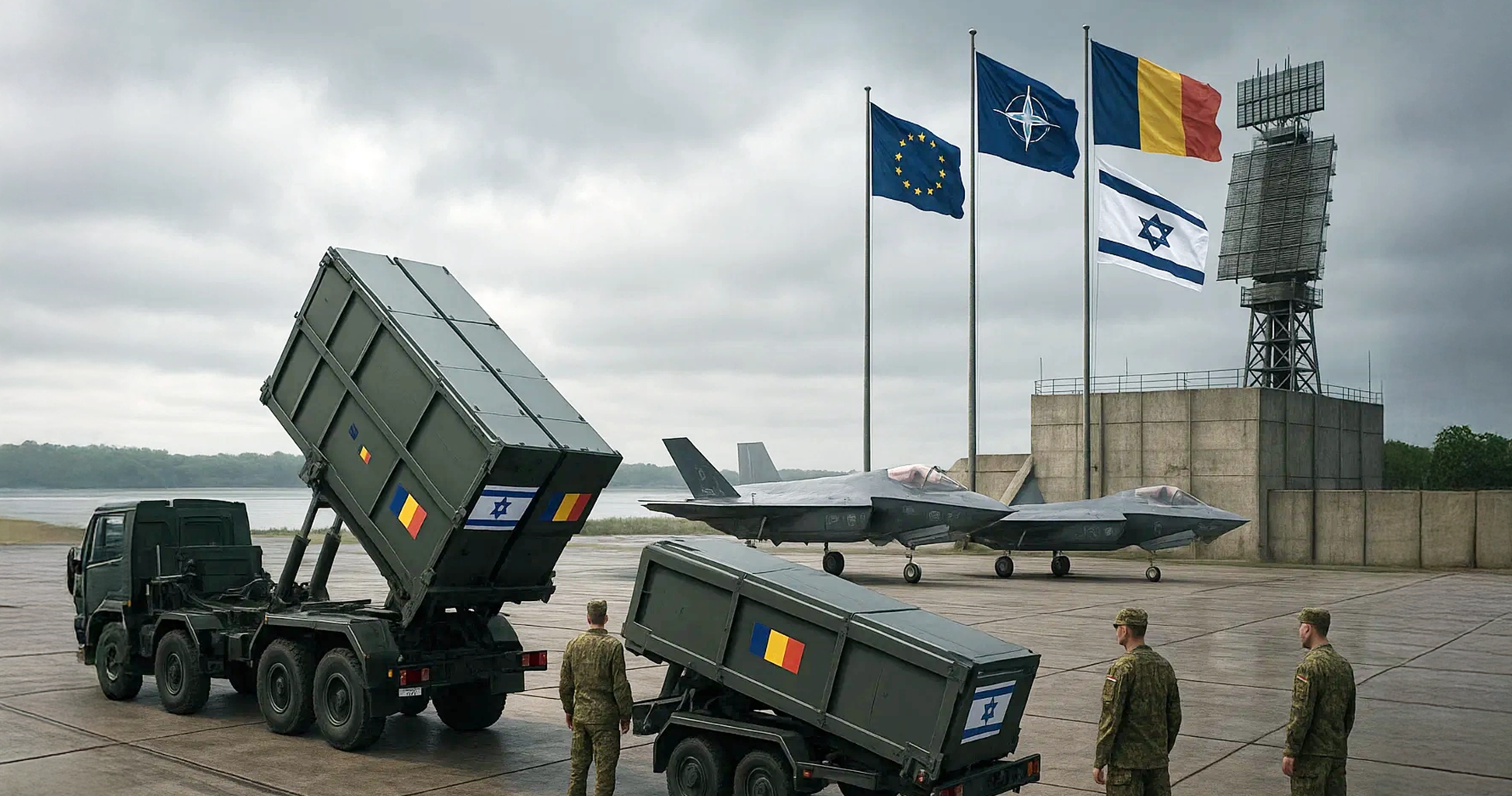Romania’s agreement with Israel’s Rafael Advanced Defense Systems marks a watershed moment in its military modernization. On July 21, 2025, Bucharest signed a framework deal to acquire six Shorad‑Vshorad integrated short-range air defense systems, widely understood to be the Israeli Iron Dome family, for over €2 billion. Beyond simply replacing outdated Soviet-era hardware, this move underscores Romania’s pivot toward cutting-edge Western and Israeli technology, reinforcing its alignment with NATO’s evolving defense posture.
Why Now? The Eastern Flank Under Fire
Romania’s accelerated defense upgrades come in response to persistent threats emanating from Russia’s ongoing aggression in Ukraine. Reports of Russian drone debris falling on Romanian territory have heightened urgency, according to Arab News. As a NATO member sharing a border with an active war zone, Bucharest is fast emerging as a strategic anchor on the alliance’s Eastern front. Previously, Romania had invested heavily in 32 F‑35s from the U.S. (a $6.5 billion deal signed in 2024) and committed to defense spending at around 2.5 % of GDP. The Iron Dome acquisition complements that investment by adding rapid-response protection against unconventional threats: drones, cruise missiles, and saturation rocket barrages.
Integrating Multi‑Tiered Defense
Romania’s military modernization now features a layered defense architecture: U.S.-supplied Patriot long-range interceptors, NATO’s Aegis facility at Deveselu, and soon Israel’s Spyder/Phoenix short-range systems. This creates a defense-in-depth capable of intercepting threats at multiple altitudes and stages—ideal against asymmetrical warfare tactics. The move also signals growing interoperability between NATO and Israeli systems, potentially catalyzing broader integration within the emerging European Sky Shield Initiative, which seeks a continent-wide missile defense architecture.
Diplomatic and Industrial Implications
Signing with Rafael sharpens Romania’s ties with Israel and underscores its confidence in non-American defense suppliers. It strengthens political relations and opens possibilities for deeper industrial and technological partnerships—particularly given the 7‑year framework allowing phased procurement and integration. For Israel, this is a landmark export: the first time a European NATO ally will deploy the Iron Dome or Spyder systems, potentially triggering further European uptake.
A Message to Moscow, and Brussels
Romania’s Iron Dome deal sends a dual message. To Russia, it acts as a deterrent: any escalation would risk interception before crossing its borders. To Brussels and NATO, Romania reveals the alliance’s evolving strategic priorities, not just in hardware, but timely deployment along vulnerable zones. Investments such as this and the Deveselu Aegis site demonstrate a concentrated commitment to shielding Eastern Europe from both conventional and hybrid threats.
Washington’s Role: Silent Partner or Strategic Conduit?
While Romania’s Iron Dome deal is formally a bilateral transaction with Israel, the United States plays a quiet but crucial role. The Iron Dome system itself was developed jointly by Rafael and U.S.-based Raytheon Technologies, with over $1.6 billion in American funding since 2011 underwriting much of its R&D and production capacity (Congressional Research Service). Thus, any export of Iron Dome or its components requires U.S. authorization under ITAR (International Traffic in Arms Regulations), making Washington a gatekeeper to the system’s proliferation.
Moreover, Romania’s ongoing defense buildup, most notably its acquisition of 32 F-35s from Lockheed Martin for $6.5 billion, reinforces its status as one of Washington’s closest strategic partners on NATO’s Eastern flank. The U.S. also operates the Aegis Ashore missile defense system in Deveselu, Romania, a highly sensitive radar-and-interceptor facility that Russia has repeatedly criticized. These deployments, now complemented by Israeli air defense systems, create a U.S.-backed tripwire of multi-layered deterrence extending from the Baltic to the Black Sea.
Politically, Romania’s ability to integrate U.S., Israeli, and NATO technologies speaks to its credibility as a front-line security partner. This multi-sourced defense ecosystem also aligns with Washington’s push to diversify NATO’s defense suppliers while maintaining interoperability and minimizing reliance on legacy Soviet systems still in use across parts of Eastern Europe.
At a time when U.S. foreign aid to Ukraine faces domestic hurdles, facilitating allies like Romania to bolster their own defenses through both U.S. and allied suppliers helps distribute strategic responsibility across NATO. In effect, Romania’s Iron Dome purchase represents a form of transatlantic burden-sharing, one that tacitly supports U.S. interests without requiring additional boots on the ground or direct American military commitments.
Looking Ahead: NATO’s New Defense Paradigm
Romania’s procurement sets a precedent for broader NATO and EU air defense efforts. As other Eastern European states like Poland contemplate similar acquisitions, the European Sky Shield Initiative gains momentum. Tactically, iron-clad Eastern defenses may embolden NATO’s deterrence posture—but they also raise questions about flexibility, budget prioritization, and burden-sharing. As Romania becomes a testing ground for integrated air defense, its experience will be instructive for alliance planning in the years ahead.

















